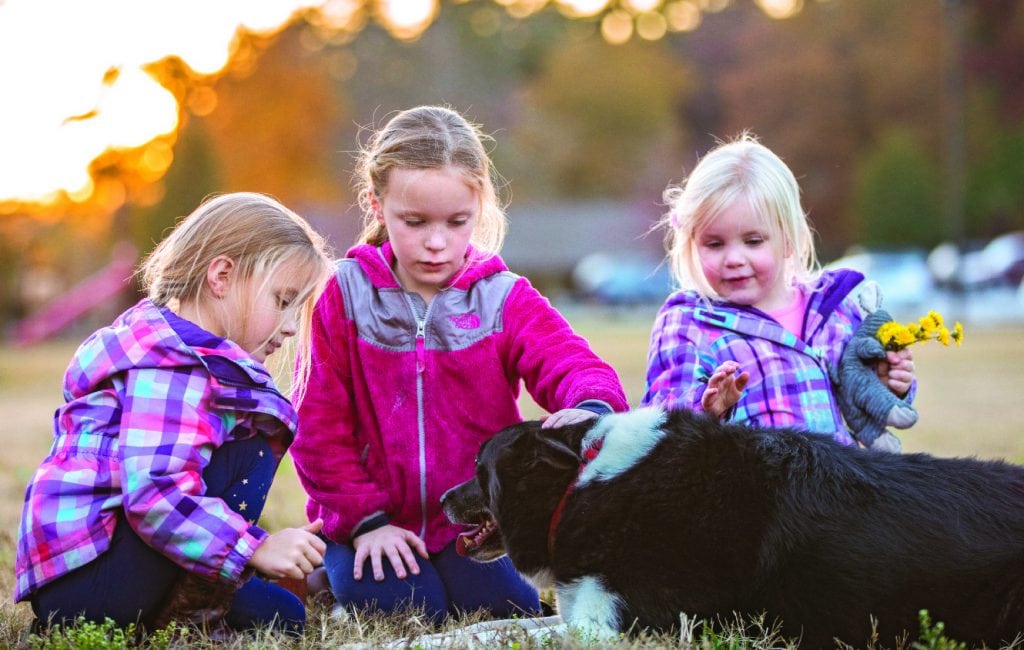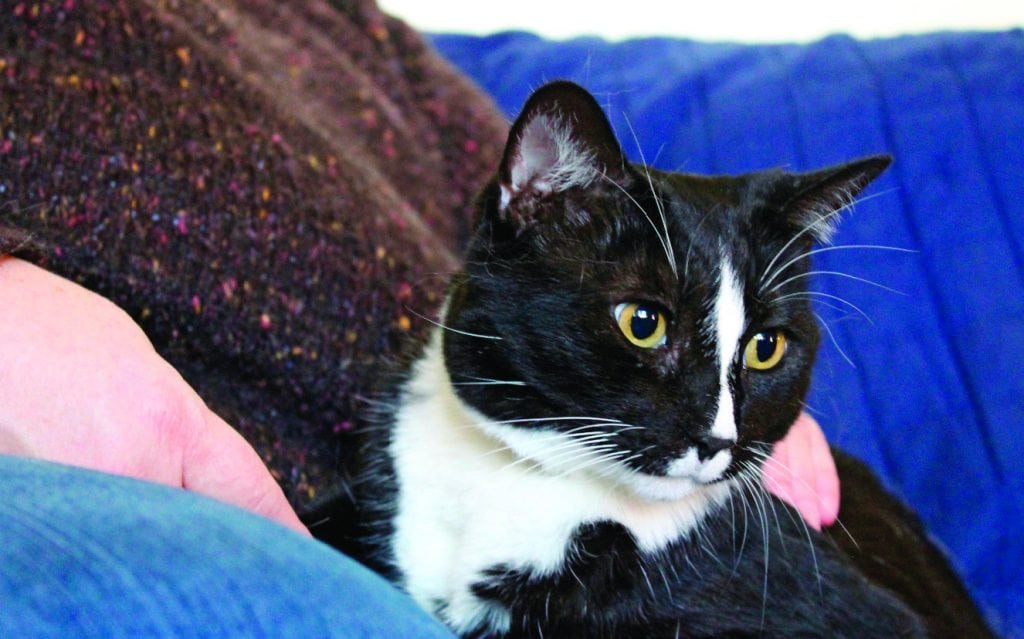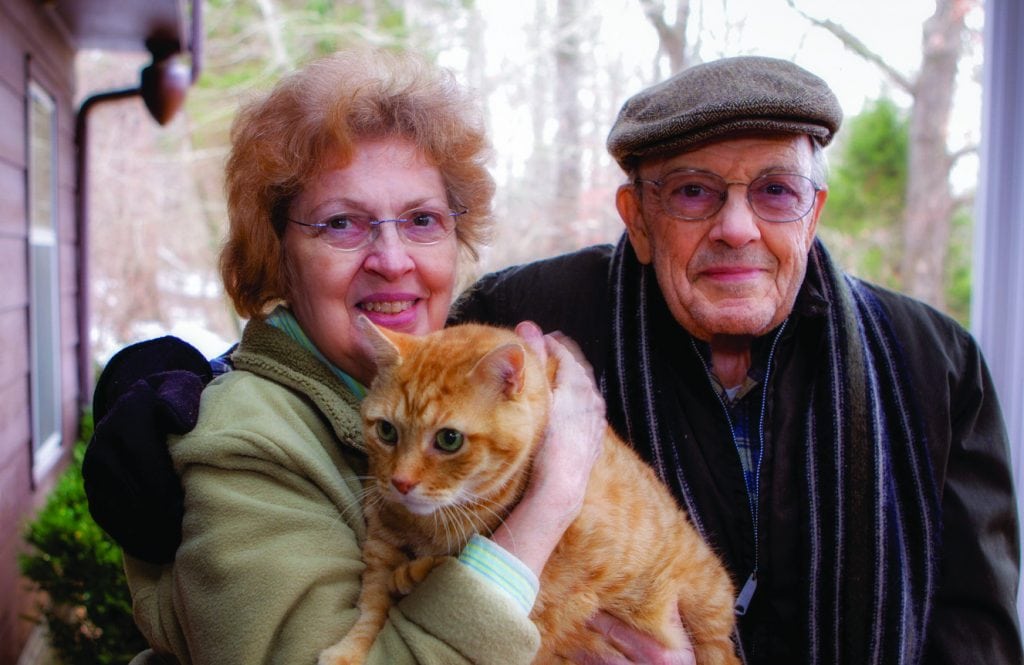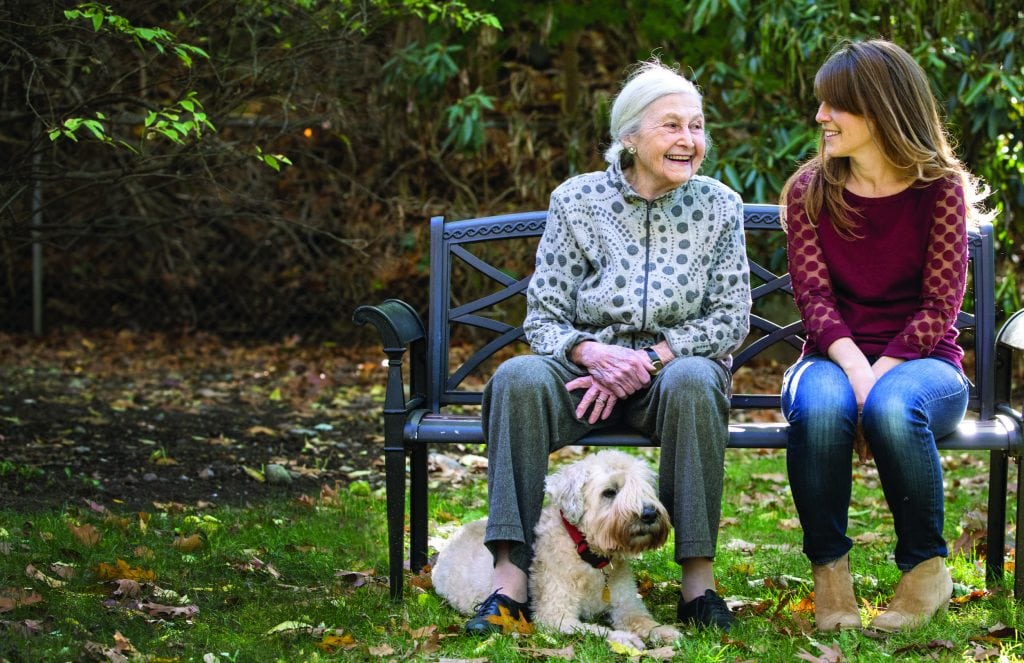Health professionals and pet-lovers discuss the benefits of a life with our animal friends.
“After a stressful day, sometimes all I want to do is go home and zone out with my cat Ivy sitting on my lap for a while,” says Michele Vaughn, a middle school teacher in Tyler, Texas, who, along with her husband, Jim, rescued the white female with tabby spots nearly seven years ago.
John Ball, who recently relocated from Ellensburg, Washington, to Little Rock, Arkansas, with his 14-year-old chow chow mix and 8-year-old golden-doodle, echoes Vaughn’s sentiments.
“Every time Miss Hallie and GusGus lick my hand to go outside for a romp, I think I can literally feel my blood pressure decreasing,” he says. “I always say it wasn’t really a bad day if I come home to two wagging tails.”
According to the American Veterinary Medical Association’s most recent U.S. Pet Ownership and Demographics Sourcebook, 56 percent of American households include pets. And the majority of these pet owners, 63.2 percent, consider their companion animals to be family members.

Like Vaughn and Ball, many also believe that their pets are not only “tuned in” to their physical and mental health but can also actually help improve them. Is this possible?
In some cases, yes, according to researchers like Philip Tedeschi, executive director of the Institute for Human-Animal Connection and clinical professor at the University of Denver Graduate School of Social Work.
The amount of research in the area of human-animal interaction is increasing every day, and it is confirming what many people with companion animals have already recognized instinctively. “Nonhuman animals are a very critical part of people’s lives — part of their support systems and some of the most reliable and relevant and valued relationships people have,” Tedeschi says. Experts agree that these relationships can, in turn, have a positive impact on physical and mental health.
People and pets that live together develop a mutually beneficial relationship. We call this the human-animal bond, and there are numerous studies that prove there are physical and mental health benefits for people of all ages who live with and care for an animal.
“My elderly mother used to have long phone conversations with me about everything her dog had done that day to make her smile,” says Dr. Mary Ergen of Companion Animal Hospital in Goodlettsville. “She didn’t like the dog hair in her house, but it was a small price to pay for the companionship and affection her dog gave her daily.”
“Pets add so much to our lives,” says Dr. William A. Lambert of Lambert Animal Clinic in Milan. “We become so attached to our animals, they truly are part of the family.”
“One of my favorite dogs, Gretchen, slept at the foot of my bed for 10 years,” says Lambert of his beloved rottweiler. “She went to work with me every day and was very gentle, but I also felt very protected with her around. She never let me out of her sight. I had trouble sleeping for months after she was gone.”
Hidden connections
Patients are usually aware of the possible physical downsides of living with pets, says Dr. Lee Blecher, who practices family medicine with a concentration in women’s health in Fairfax, Virginia. They know that pregnant women shouldn’t handle cat litter, for example, because of the risk of birth defects from toxoplasmosis, and they know that animal bites and scratches should be treated immediately to prevent infection. They also know that sniffling, sneezing and other allergic responses to pets can create misery for sensitive household members.
The benefits of sharing a home with a companion animal, however, are often overlooked or in many cases just now coming to light. For example, while some pets may act as allergens, investigators are learning that pediatric exposure to animals might actually prevent allergies later in life.
“Kids exposed to pets early on in life have fewer allergies and pulmonary disorders like asthma,” says Blecher, who is also an associate clinical professor of family medicine with the Virginia Commonwealth University School of Medicine.
“It ends up being a beneficial thing. It primes the immune system, similar to the concept of immunotherapy or allergy shots,” he adds, citing two recently published Swedish studies.
A heart-healthy match
The primary cause of death in the U.S. is cardiovascular disease (CVD), so studies indicating that pet ownership can improve CVD symptoms and indicators like lipid (fat) profiles, stress response and, yes, even blood pressure have been greeted with interest by the healthcare community. After critically reviewing the literature, the American Heart Association (AHA) published a Scientific Statement on Pet Ownership and Cardiovascular Risk in 2013 that concluded that pet ownership, particularly dog ownership, is probably associated with decreased CVD risk and may even have a causal role in reducing it.
One possible cause of this positive impact is the increased physical activity usually seen on the part of dog owners. “We all have patients whose only exercise comes when they have to get up to walk the dog three times a day,” Blecher says.
The same AHA statement cautioned, however, that, while getting a pet might be a “reasonable” recommendation in some cases, “pet adoption, rescue or purchase should not be done for the primary purpose of reducing CVD risk.” That’s in part because not all situations are the same.
“Individual variation in people, animals and different contexts likely all matter,” says Meagan Mueller, a research assistant professor at Tufts University Cummings School of Veterinary Medicine and associate director of the Tufts Institute for Human-Animal Interaction. “And so far, it seems as though the quality of the relationship matters. A positive, mutually beneficial relationship with a pet is probably going to be associated with more positive outcomes.”

Bioaffiliation
The concept of bioaffiliation, or the recognition that we learn about our own well-being by looking at other living things around us, is another area researchers are exploring.
“If you were standing next to a bunch of people and all of a sudden they all startled and ran away, you would probably think about doing the same thing, right?” Tedeschi says.
Contact with other healthy, living systems can also help us assess our situations and relax and allow our physiology to respond in kind.
“For example, we can put a resting therapy dog right alongside a traumatized child and have that child use that animal’s heart rate and respiration to match his or her own,” says Tedeschi, adding that this process allows the child to recalibrate his or her own physiology and slow down acute stress reactions.
This is particularly significant since the longer the brain of a trauma patient feels unsafe, the less positive his or her outcome may be. “So the quicker we can be in moving somebody to a sense of feeling safe and a sense of well-being, the fewer symptoms we have over the long term,” Tedeschi says.
Specific needs
Leading the way in terms of research about bioaffiliation and other human-animal connection questions is work with the therapeutic use of animals for patients with conditions like autism and post-traumatic stress disorder (PTSD).
Patients with autism spectrum disorders can sometimes have trouble functioning in traditional settings, says Tedeschi, who has collaborated with celebrated autism and animal behavior expert Temple Grandin.
Animals communicate using everything except spoken or written words. Many individuals on the autism spectrum are able to use these nonverbal forms of communication to have really successful connections with animals. “Animals provide fantastic opportunities for working with these individuals,” Tedeschi says.
Another example of pet-based interventions becoming useful is with the military veteran population returning home from extensive deployments. It is estimated that there are now about a half-million U.S. service members who potentially are experiencing PTSD and similar traumatic brain injuries.
One of the outcomes of PTSD is that many individuals retreat and avoid social connections. “So when somebody doesn’t trust a human being, in many cases, animals are an alternative safe and supportive relationship,” Tedeschi says. “This allows them to begin to utilize their brains in a capacity consistent with healthy relationships and begin to recover, to retrain the traumatized brain to be able to function in everyday life.”
One clinical intervention for PTSD, for example, is to teach people experiencing hypervigilance to observe their own animals. Cats, because they are very sensitive to their environments, are fantastic for this, Tedeschi says. This allows somebody to form a second opinion about whether there’s an actual risk and begin to regain control of his or her own startle reflexes.
The truth about cats
It’s something of a myth that cats are less trainable than dogs, says Tedeschi, adding that they can be trained through positive reinforcement, “often in the very same ways that dogs can be trained — but we have different expectations for them.”

Cats can, in fact, learn to participate in our lives much like other companion animals can be trained to do — if you are committed to it. “You have to be consistent, and most cat owners aren’t,” Tedeschi says. “Most cat owners have a funny, almost roommate-like relationship with their cats where they love each other but they have habits that drive each other crazy.”
There are programs incorporating cats that teach them to walk on leashes, play games, do obstacle courses, fetch things and interact with and respond to people in helpful ways, Tedeschi says. Cats also offer tremendous opportunities for people with minimal space or minimal access to the outdoors — for example, someone who is housebound or unable to leave home frequently.

A dangerous situation
“Social isolation is one of the most dangerous conditions we treat,” Tedeschi says, emphasizing it has the same overall impact on health as if someone smoked a pack of cigarettes a day. “It shortens people’s lives on multiple, different levels, creating these psychological or emotional circumstances where somebody begins to have other kinds of problems.”
A number of specific populations are particularly prone toward becoming isolated — for example, older adults who are losing their friends and spouses. In many cases, pets can become very effective social support systems.
When Vaughn and her husband moved her retired mother into assisted living recently, one of the top priorities was whether her two cats would be accepted.
“Even though she is in a wheelchair, Mom is still able to look after them with my help, and they really add so much to her life,” says Vaughn.
The right fit
For the many millions of adults who are lonely and lacking social connections as well as for the millions of homeless animals that are euthanized each year, this may seem like a win-win. But experts emphasize that there also has to be a good fit, both between human and animal and within the larger (and often changing) situational context.
Blecher has seen the positive side of living with pets for many of his patients, noting that pets can provide emotional comfort when the patient is ill and companionship when someone loses a family member. But he also observed the downside of a bad match or a changing situation, particularly for those who do not have family members like Vaughn to provide backup support.
“Patients develop emotional concerns when they get ill and can’t take care of their pets,” says Blecher. “And sometimes, economically, they can’t afford the veterinary expenses.”
It is important that pet owners have plans in place for the care of their pets, Blecher says, adding that he has one savvy patient who has even written animal care plans into a will.
Connecting with the moment
Understanding the different types of people and pets that could help each other most is an area where we need more research, says Mueller. “One of the major unanswered questions is determining under what circumstances pet ownership is beneficial.”
In the meantime, however, “there is something very heartwarming about having someone love you so unconditionally,” says Vaughn.
“Dogs require you to be present, and they are geniuses at forcing you to stop and attend to the moment,” says Ball, who, in addition to tendencies toward high blood pressure, has also experienced challenges with stress and depression.
“Hallie and GusGus provide me with empathy and love and playfulness,” Ball says. “I don’t just care for them. They actively care for me.”
Ultimately, says Tedeschi, whether having a pet improves your health is about relationships.
“The same kinds of important qualities that exist in our human relationships that allow us to feel connected, to have the ability to interact — those are right at the heart of many people’s relationships with their companion animals,” he says.
A.D. Lively is an Arkansas-based writer specializing in health and wellness.



